When considering the purchase of a Polaris Ranger, you should know that while they are celebrated for their performance and versatility, certain model years have had notable issues. A savvy buyer like you will benefit from identifying which years to steer clear of to ensure you get the best value and the most reliable experience from your off-road vehicle.
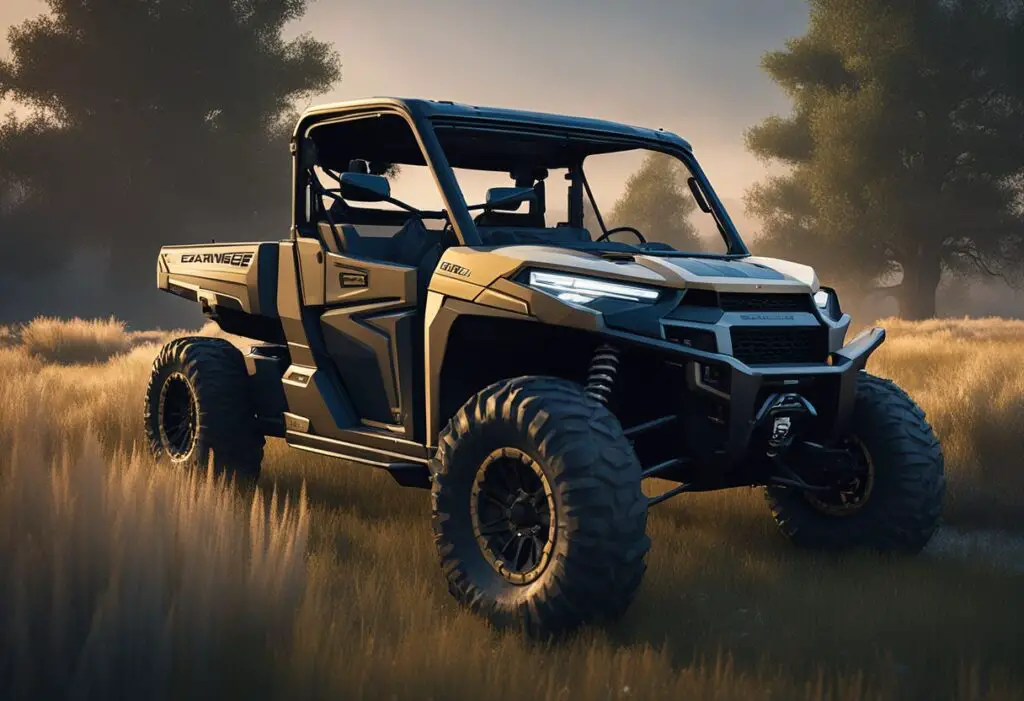
The Polaris Ranger is a line of UTVs designed to serve both work and play purposes effectively. However, some years have been marred by recalls and widespread complaints from users, suffering problems ranging from minor inconveniences to significant mechanical failures. Being informed about these problematic model years can save you from unexpected downtime and costly repairs.
Key Takeaways
- Certain Polaris Ranger years have been problematic and should be avoided.
- Knowledge of common issues with specific models informs better purchasing decisions.
- Investing time in researching and understanding the history of Polaris Ranger models pays off.
Understanding Polaris Ranger Models
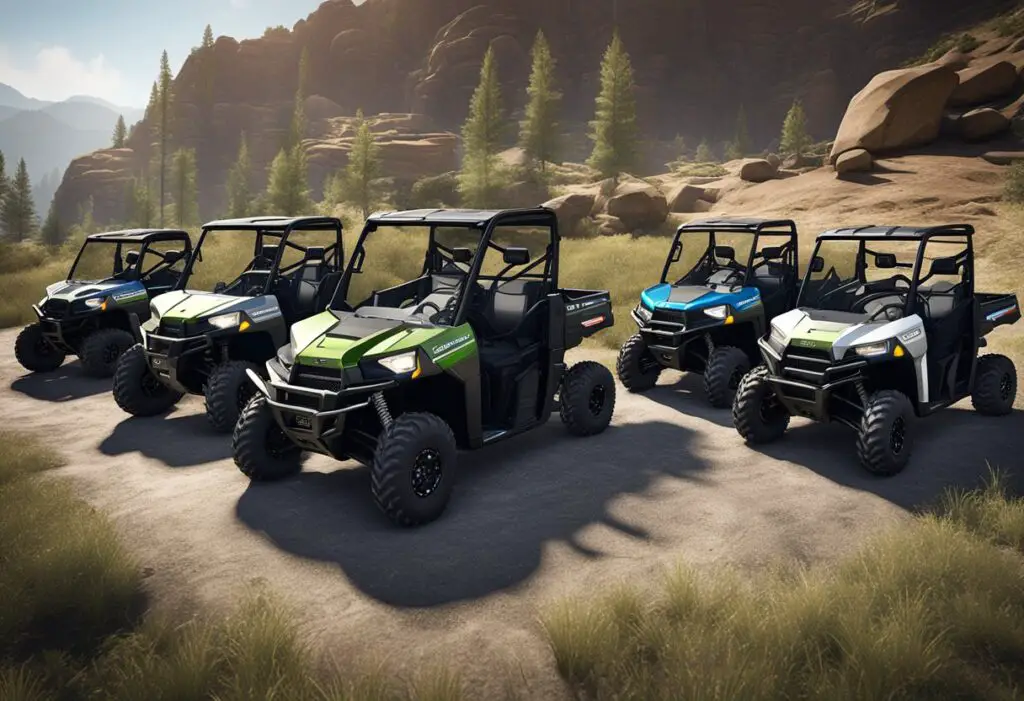
When considering a Polaris Ranger, it’s important for you to recognize the differences each model year brings and the way features have evolved over time.
Variations Across Model Years
The Polaris Ranger has undergone significant changes throughout the years, each model promising unique advancements. Here’s a quick glance at how some of the models differ:
- Ranger 800 (Pre-2013): Older, less refined engine and suspension.
- Ranger XP 900 (2013 and onward): Improved power and suspension.
- Ranger XP 1000 (2017 and newer): Further advanced in terms of horsepower and torque.
- Polaris Ranger 570: Offers a balance of performance and affordability, often appealing for those seeking efficiency.
Later models began to introduce electronic power steering, a feature that significantly enhances your riding experience. The fuel system and transmission in each vary, with technological improvements made with almost every successive year.
Key Features and Enhancements
Key features such as engine power, suspension quality, and payload capacity have seen continuous enhancements:
- Engine: Between the models, you’ll find engine size and power ranging from modest in the Polaris Ranger 570, with capabilities suitable for lighter jobs, to the robust Ranger XP 1000 that boasts significant horsepower and torque suitable for heavy-duty tasks.
- Suspension: It’s received updates to provide a more comfortable ride and better handling over tough terrain.
- Transmission: Has become smoother and more reliable across the years, especially in models with electronic power steering which provide a more responsive ride.
Models like the Ranger XP 900 and Ranger XP 1000 are typically equipped with a more modern fuel system and state-of-the-art enhancements, ensuring better performance, efficiency, and reliability. Payload capacity generally increases with the newer models, accommodating growing user demands. Here’s a breakdown of the key enhancements specific to some recent models:
| Model | Engine Power | Suspension | Payload Capacity |
|---|---|---|---|
| Ranger 800 | Moderate | Standard | Good |
| Ranger 900 | High | Enhanced | Better |
| Ranger XP 900 | High | Enhanced | Better |
| Ranger 570 | Efficient | Good | Good |
| Ranger XP 1000 | Highest | Highly Refined | Best |
Remember, your choice should align with your intended use—light work, leisure, or intense utility tasks.
Years To Avoid Buying
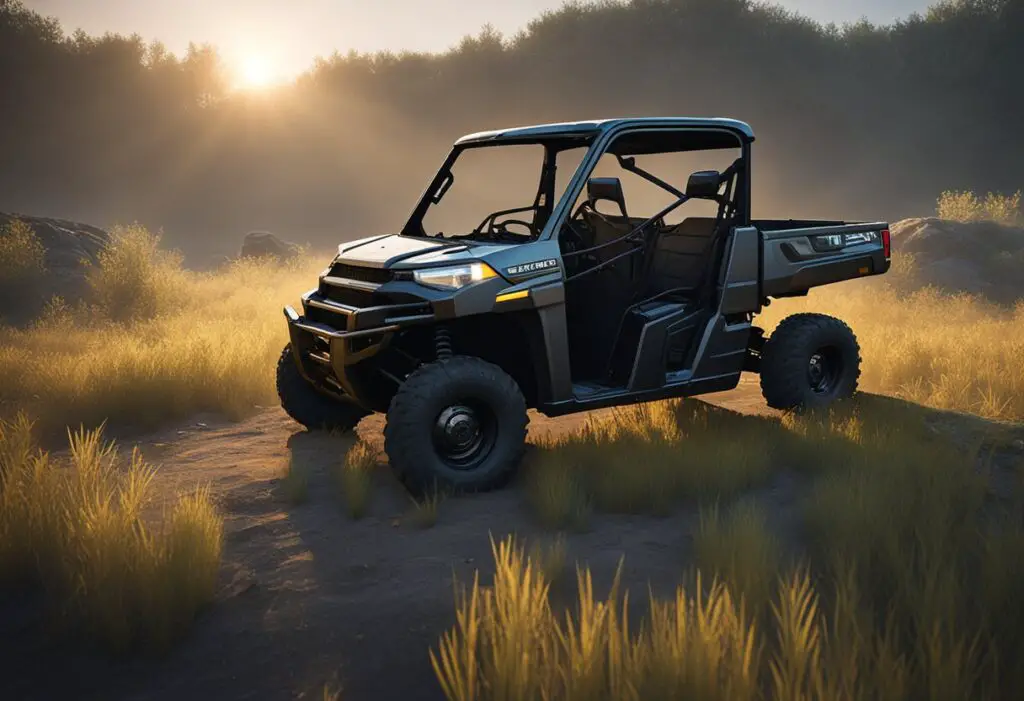
When looking into the Polaris Ranger lineup, it’s important to make informed choices. Specific model years have been identified as problematic due to various mechanical issues, so here’s what you need to know to steer clear.
Specific Model Years With Known Issues
- 2009 Polaris Ranger XP: A critical throttle pedal defect could cause sudden acceleration, leading to loss of control.
- 2010 Polaris Ranger: Owners have reported steering issues and transmission failures.
- 2013 Polaris Ranger: Common issues include electrical system malfunctions and engine overheating.
- 2014 Polaris Ranger: Clutch problems and cooling fan defects were more prevalent in this year.
- 2016 Polaris Ranger: Fuel system difficulties and heat-related issues have been noted.
- 2021 Polaris Ranger: Electrical system concerns have persisted, along with some recalls.
The table below summarizes the problematic years:
| Model Year | Common Problems |
|---|---|
| 2009 | Throttle pedal defect |
| 2010 | Steering and transmission |
| 2013 | Overheating and electrical |
| 2014 | Clutch and cooling fan issues |
| 2016 | Fuel system and heat issues |
| 2021 | Electrical problems and recalls |
Patterns of Recurring Problems
Throughout the models from years to avoid, a few recurring themes in reported problems have emerged, notably in the:
- Transmission: Issues centered on failure and malfunction, particularly in the 2010 models.
- Engine Overheating: A frequent problem, overwhelmingly in the 2013 model.
- Electrical System: Difficulties with the electrical system have been persistent, peaking in 2013 and recurring in 2021.
- Cooling System: 2014 models saw notable cooling fan problems which could impact engine temperature regulation.
- Fuel System: The 2016 Rangers experienced fuel-related concerns that can affect vehicle performance.
To stay ahead, you might want to keep an eye on recall notices and maintenance records when considering specific years for purchase.
Common Polaris Ranger Problems
When you own a Polaris Ranger, it’s crucial to be aware of potential issues that could arise with its operation. The problems detailed here affect various model years and are based on reports from numerous owners.
Electrical and Engine Troubles
Your Ranger’s electrical system is pivotal for smooth functioning. A charging problem may arise if the stator fails, hindering the battery’s ability to hold a charge, which can leave you stranded. Engine troubles such as engine bogging, starter problems, or backfiring can also impair your off-road experience. These could result from issues like a malfunctioning fuel injector or spark plugs in need of replacement.
- Common Electrical and Engine Issues:
- Charging problems
- Engine bogging
- Starter motor failure
- Engine backfires
Issues With Steering and Suspension Systems
A well-functioning steering system ensures you have control over your Polaris Ranger, especially on uneven terrains. Unfortunately, some Rangers face steering problems, such as a faulty steering rack that could compromise your vehicle’s responsiveness. Meanwhile, suspension problems can lead to a bumpy ride, with potential issues in the shocks or struts impacting the comfort and handling of your Ranger.
- Key Steering and Suspension Issues:
- Steering rack malfunctions
- Worn out suspension components
Overheating and Cooling Challenges
Running hot is a serious issue, and engine overheating can occur due to a clogged radiator or a failing cooling fan. This could sideline your adventure, necessitating prompt attention. Ensuring your cooling system is free of debris and in good working order helps prevent these overheating dilemmas.
- Overheating Issues May Include:
- Blocked radiator
- Cooling fan failure
Maintenance Insights for Longevity
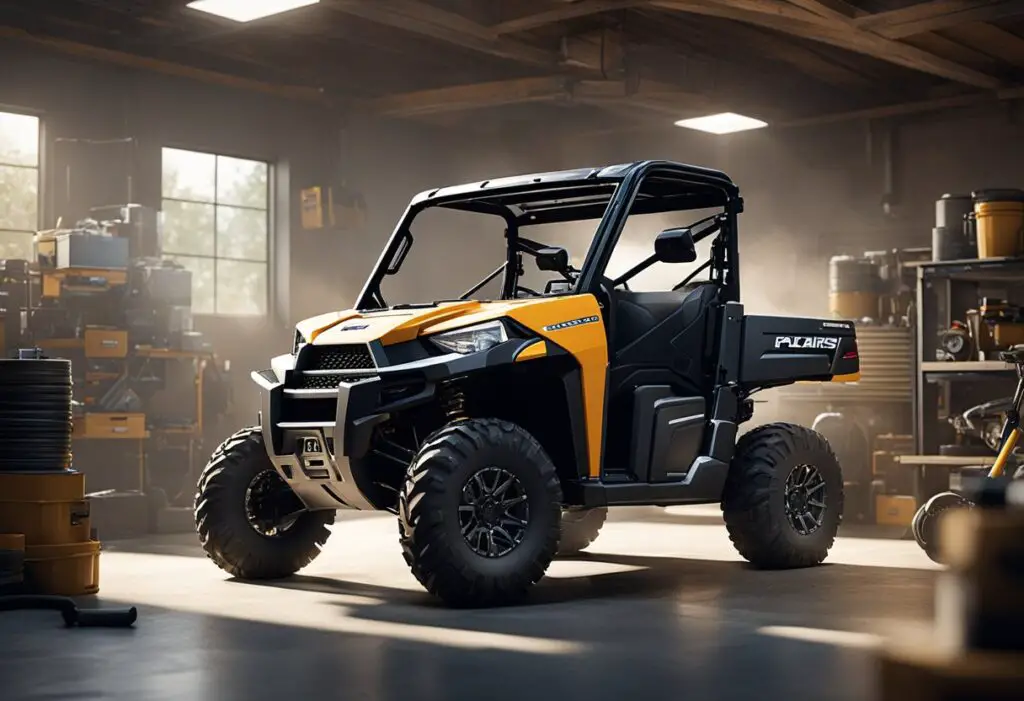
Maintaining your Polaris Ranger properly can significantly enhance its durability and reliability. Pay special attention to critical systems to keep your ride smooth and your performance optimal.
Routine Checks and Preventive Care
Weekly Maintenance:
- Inspect Tires and Wheels: Check for proper inflation to avoid uneven wear and ensure optimal performance.
- Transmission System: Verify fluid levels and look for signs of leakage to prevent gear shifting issues.
- Steering and Suspension Systems: Look for any unusual wear or damage that could hinder the ride quality.
Monthly Maintenance:
- Electrical System: Inspect all lights, connections, and battery terminals for corrosion to ensure reliable operation.
- Fuel System: Change the fuel filter and inspect the fuel lines for integrity to maintain engine performance.
Seasonal Maintenance:
- Coolant System: Before summer and winter, check coolant levels and the condition of hoses.
- Oil and Filters: Change engine oil and filters according to the manufacturer’s schedule to keep the engine in top condition.
Advice for Used Polaris Ranger Buyers
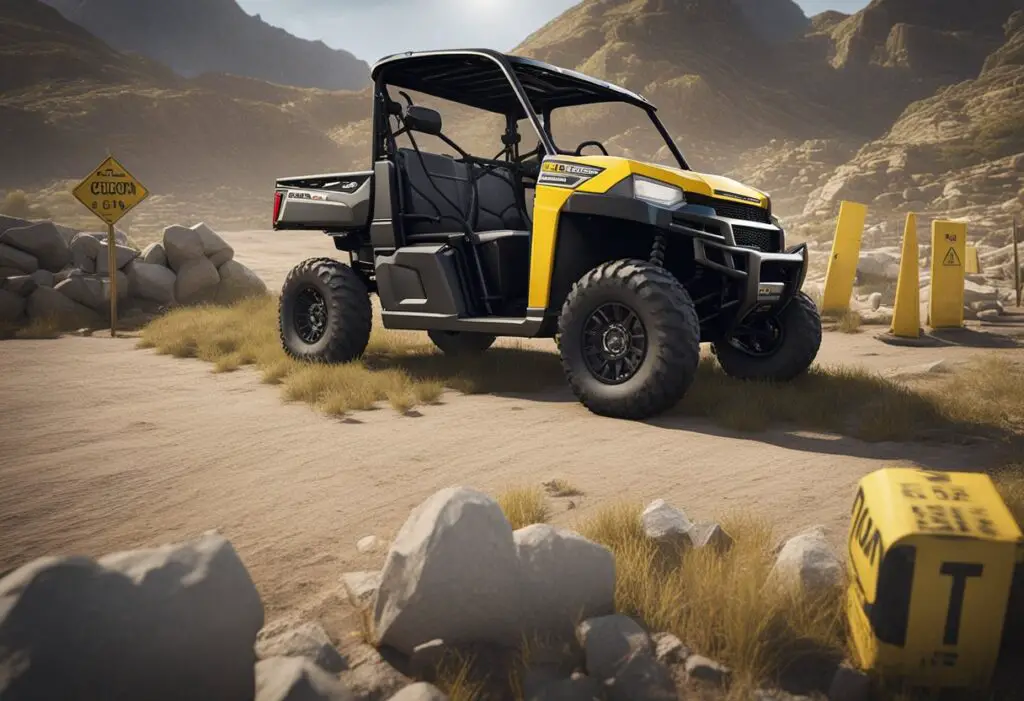
When you’re in the market for a used Polaris Ranger, paying attention to the vehicle’s condition and history is as important as finding the right model. Let’s ensure you get a utility vehicle that matches your needs for versatility and maneuverability, whether for work, hunting, or off-road adventures.
Important Factors When Buying Used
- Year and Model: Be wary of certain models that might have repetitive issues, especially ones reported in 2004, 2010, 2013, 2014, 2016, and 2021. These years have been identified as problematic by several users.
- Maintenance Records: Check for a well-documented maintenance history. Regular service is a good sign of a well-kept vehicle.
- Safety Concerns: Evaluate safety features to make sure they are intact and operational.
- Drive System and Motor Inspection: The condition of the motor and the drive system is critical for a utility vehicle like the Polaris Ranger; ensure they’re in proper working order.
Professional Inspection and Test Drives
- Hire an Expert: A professional inspection might reveal hidden problems, so consider hiring an expert to examine the vehicle thoroughly.
- Take a Test Drive: Always take the Ranger for a test drive. Pay attention to the maneuverability, responsiveness of the engine, and any unusual noises or behaviors.
Before finalizing your purchase, make sure all your concerns are addressed, and you’re comfortable with the used Polaris Ranger’s condition. Your diligence will help ensure you enjoy your off-road experiences safely.
Enhancement and Accessories
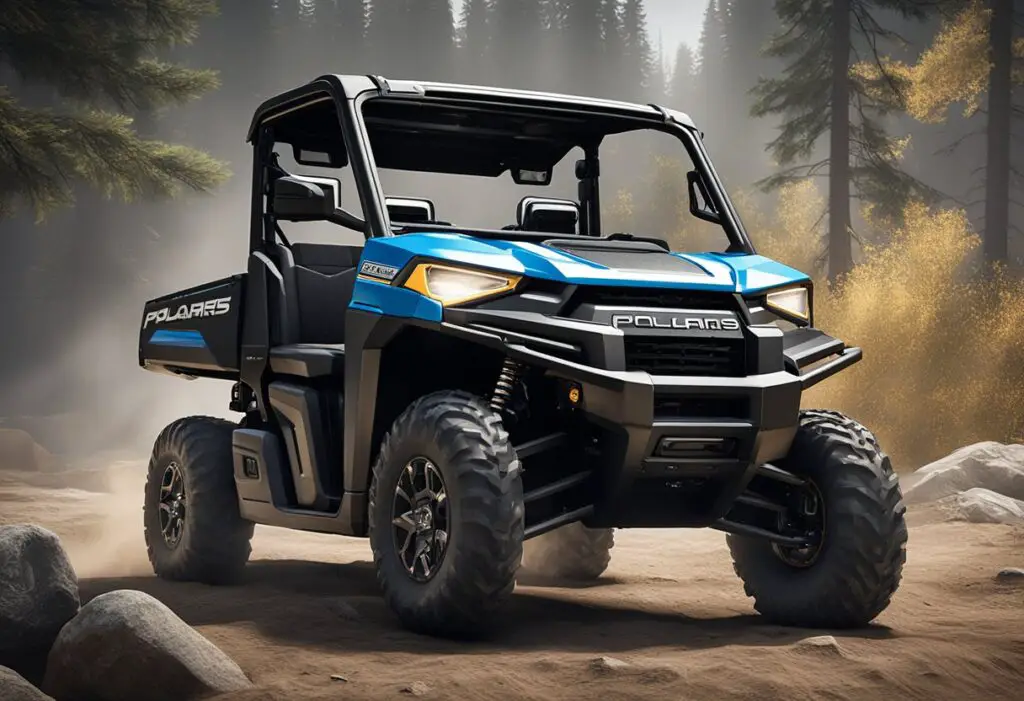
When you’re aiming to enhance your Polaris Ranger experience, accessories and customization give you the flexibility to tailor your vehicle to your specific needs, whether it’s for work or play.
Customizing Your Polaris Ranger
Your Polaris Ranger is not just a tool—it’s a companion for your off-road adventures and tough tasks. Customizing it can significantly improve functionality and comfort. Here’s how you can make your Ranger truly yours:
- Windshield: Adding a windshield can protect you from the elements. You’ll find options ranging from full windshields for maximum coverage to half designs for a breezier ride.
- EPS (Electronic Power Steering): Upgrading to or ensuring your Ranger has EPS can enhance handling, especially when navigating challenging terrain.
- Storage Solutions: Tailor your storage options to your needs. From under-seat bins to cargo racks, the right accessories can keep your gear secure and organized.
- Lighting: Brighten up the track ahead with additional LED lights that make your path clear in any condition, whether at dawn, dusk, or in the dead of night.
- Protection: Durable bumpers, skid plates, and brush guards can keep your Ranger safe from scrapes and bumps along the trail.
- Performance: Enhance your Ranger with performance parts such as high-flow air filters or upgraded suspension kits for an even better off-road experience.
By considering your typical usage, you can prioritize which accessories and customization options will serve you best. Dimensions and dry weight may be affected by these enhancements, so keep this in mind when outfitting your Ranger, especially if you have specific limitations or requirements for transportation. With the right combination of accessories, your Ranger will be ready for any job or journey that comes your way.
Frequently Asked Questions
In this section, you’ll find targeted answers to common queries about the Polaris Ranger, ensuring you make an informed decision whether you’re buying or maintaining one.
What are some common issues with specific Polaris Ranger models?
Polaris Ranger models from 2009 to 2013 have faced reliability concerns, including transmission problems and electrical failures. The 2009 Ranger XP, specifically, has had notable issues with the throttle pedal, which can lead to unintended acceleration and loss of control.
Which Polaris Ranger models are considered the most reliable?
The Polaris Ranger XP 900, launched in 2013, has been recognized for its robust engine and design, garnering praise for its dependable performance and durability.
What should I inspect when purchasing a used Polaris Ranger?
You should thoroughly check for any signs of excessive wear and tear, ensure all electrical systems are functioning correctly, and inspect for any transmission or suspension issues, which are common concerns cited for certain models in the years prior to 2014.
How does mileage affect the condition of a Polaris Ranger?
Higher mileage on a Polaris Ranger, as with any vehicle, can indicate more wear and potential need for repairs or replacements, especially components like the drivetrain, suspension, and engine parts.
At what mile range should a Polaris Ranger generally be serviced?
Your Polaris Ranger should undergo regular maintenance every 100 hours of operation or about every 1,000 miles, whichever comes first, to ensure it remains in optimal condition.
What improvements were made in Polaris Ranger models that started using fuel injection?
Fuel-injected Polaris Ranger models offer improved fuel efficiency, better throttle response, and a more reliable start-up in various weather conditions compared to older carbureted models.

Leave a Reply